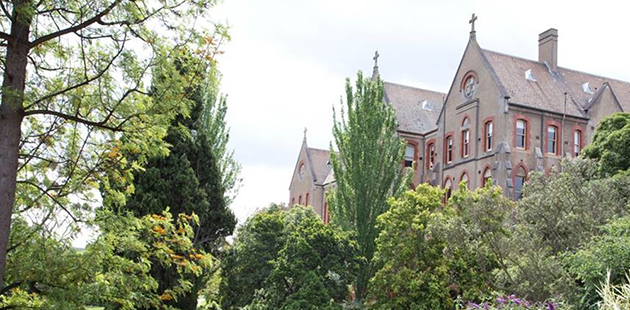 Joining iconic landmarks including the Royal Exhibition Building, Sydney Opera House and the Melbourne Cricket Ground in achieving the country’s highest level of heritage recognition, the Abbotsford Convent has become the 111th site added to the National Heritage List, in recognition for demonstrating Australia’s social and welfare history through the lens of a religious and charitable institution.
Joining iconic landmarks including the Royal Exhibition Building, Sydney Opera House and the Melbourne Cricket Ground in achieving the country’s highest level of heritage recognition, the Abbotsford Convent has become the 111th site added to the National Heritage List, in recognition for demonstrating Australia’s social and welfare history through the lens of a religious and charitable institution.
A beloved urban retreat for inner-Melbourne, and home to more than 100 arts and creative practitioners, the Abbotsford Convent was once one of the largest Catholic complexes in Australia, and by 1901 was the largest charitable institution operating in the Southern Hemisphere.
Founded by The Sisters of the Good Shepherd in 1863, the Abbotsford Convent operated for more than 100 years through the social traumas caused by the gold rush boom and bust, the Great Depression and two world wars.
Over the period of a century, thousands of girls and women were placed in care at the Convent, with many residing in the Convent’s Sacred Heart building, and labouring in the onsite Magdalen Laundries. While providing shelter, food and education, the Convent was also a place of hardship and ordeal for some of the women, as was often the experience of those in institutionalised care.
Now a not-for-profit arts, cultural and learning precinct owned and operated by the Abbotsford Convent Foundation (ACF), ACF CEO Collette Brennan said the Convent’s place on the National Heritage List will help protect the site’s future, while honouring those who were affected by its past.
“As a working monastic site, the Abbotsford Convent irrevocably shaped the lives of thousands of women and girls who lived and worked here between 1863 – 1974,” said Ms Brennan.
“By recognising the importance of this site, its heritage and its role as an institution of welfare during the 19th and 20th centuries, our place on the National Heritage List captures the role of the church at that time in providing critically needed welfare support, while also honouring the experiences and the hardships that many women endured.
“Through social history tours and our Convent visitor app, we have begun to retell the stories of these women, and we hope through sharing their history, we can begin to create a legacy and culture of healing.
“We thank the Australian Government for recognising the significance of our site by acknowledging the Abbotsford Convent on the National Heritage List, and look forward to sharing our heritage and history with the 1 million visitors who come to the Convent each year,” added Ms Brennan.
Today the Abbotsford Convent is Australia’s largest multi-arts precinct. In 1974, the Convent closed as a monastic site and was sold. In 1989 it became a place of education, with La Trobe University taking over until 1997, when a major property development was proposed.
Through one of the longest and most successful community campaigns of its type in Australia, more than 6,000 objection letters, $3 million in pledges and countless volunteer hours helped save the Convent site and its heritage assets from the proposed development. The site was gifted to the community in 2001, and has been owned and managed by the Abbotsford Convent Foundation on behalf of the community since 2004.
The Abbotsford Convent site’s National Heritage Listing includes the Good Shepherd Chapel and Collingwood Children’s Farm. For more information, visit: www.abbotsfordconvent.com.au for details.
Image: Abbotsford Convent (supplied)
